Multicriteria Machine Learning Model Assessment—Residuum Analysis Review
Abstract
1. Introduction
2. Estimation Case Study
Data Preprocessing and Features Selection
- ID number—a sequence number;
- Maximum weight and tonne-kilometers, as they are frequently incomplete;
- Geographical clusters [11], the latitudes and longitudes of the loading and unloading places, which are used only in the selection of the short-range routes.
3. Methods and Algorithms
3.1. Integral Measures
3.2. Statistical Moments
3.3. L-Moments
3.4. Robust Statistics
3.5. Moment Ratio Diagrams
3.6. L-Moment Ratio Diagrams
3.7. The -Stable Distribution
3.8. Tail Index
3.9. ARFIMA Models and Fractional Order
4. Estimation Approaches
4.1. Classical Regression Models
4.1.1. Linear Models
4.1.2. Support Vector Machine
4.1.3. Gaussian Processes
4.1.4. Nearest Neighbors
4.1.5. Orthogonal Matching Pursuit
4.1.6. Ridge Regression
4.1.7. Decision Trees
4.1.8. Random Forest Regression
4.1.9. Regularization Techniques
4.2. Neural Network Approach
- Number of hidden neurons: 12–2048;
- Number of hidden layers: 1–8;
- Activation fun.: RELu, Tanh, identity, logistic;
- Optimizer: Adaptive Moment Estimation, Stochastic Gradient Descent.
5. The Results
6. Conclusions and Further Research
Author Contributions
Funding
Data Availability Statement
Conflicts of Interest
Abbreviations
| LMRD | L-Moment Ratio Diagram |
| MRD | Moment Ratio Diagram |
| Probability Density Function |
References
- Morrison, G.; Emil, E.; Canipe, H.; Burnham, A. Guide to Calculating Ownership and Operating Costs of Department of Transportation Vehicles and Equipment: An Accounting Perspective; The National Academies Press: Washington, DC, USA, 2020. [Google Scholar]
- Vu, Q.H.; Cen, L.; Ruta, D.; Liu, M. Key Factors to Consider when Predicting the Costs of Forwarding Contracts. In Proceedings of the 2022 17th Conference on Computer Science and Intelligence Systems (FedCSIS), Sofia, Bulgaria, 4–7 September 2022; pp. 447–450. [Google Scholar]
- Miller, J.W.; Scott, A.; Williams, B.D. Pricing Dynamics in the Truckload Sector: The Moderating Role of the Electronic Logging Device Mandate. J. Bus. Logist. 2021, 42, 388–405. [Google Scholar] [CrossRef]
- Acocella, A.; Caplice, C.; Sheffi, Y. The end of ’set it and forget it’ pricing? Opportunities for market-based freight contracts. arXiv 2022, arXiv:2202.02367. [Google Scholar]
- Stasiński, K. A Literature Review on Dynamic Pricing—State of Current Research and New Directions. In Advances in Computational Collective Intelligence; Hernes, M., Wojtkiewicz, K., Szczerbicki, E., Eds.; Springer: Cham, Switzerland, 2020; pp. 465–477. [Google Scholar]
- Freightfinders GmbH. Freight Cost Calculator. 2023. Available online: https://freightfinders.com/calculating-transport-costs/ (accessed on 26 May 2023).
- Tsolaki, K.; Vafeiadis, T.; Nizamis, A.; Ioannidis, D.; Tzovaras, D. Utilizing machine learning on freight transportation and logistics applications: A review. ICT Express 2022, 9, 284–295. [Google Scholar] [CrossRef]
- Pioroński, S.; Górecki, T. Using gradient boosting trees to predict the costs of forwarding contracts. In Proceedings of the 2022 17th Conference on Computer Science and Intelligence Systems (FedCSIS), Sofia, Bulgaria, 4–7 September 2022; pp. 421–424. [Google Scholar]
- Janusz, A.; Jamiołkowski, A.; Okulewicz, M. Predicting the Costs of Forwarding Contracts: Analysis of Data Mining Competition Results. In Proceedings of the 2022 17th Conference on Computer Science and Intelligence Systems (FedCSIS), Sofia, Bulgaria, 4–7 September 2022; pp. 399–402. [Google Scholar]
- Patel, Z.; Ganu, M.; Kharosekar, R.; Hake, S. A survey paper on dynamic pricing model for freight transportation services. Int. J. Creat. Res. Thoughts 2023, 14, 211–214. [Google Scholar]
- Cyperski, S.; Domański, P.D.; Okulewicz, M. Hybrid Approach to the Cost Estimation of External-Fleet Full Truckload Contracts. Algorithms 2023, 16, 360. [Google Scholar] [CrossRef]
- Kaniuka, J.; Ostrysz, J.; Groszyk, M.; Bieniek, K.; Cyperski, S.; Domański, P.D. Study on Cost Estimation of the External Fleet Full Truckload Contracts. In Proceedings of the 20th International Conference on Informatics in Control, Automation and Robotics, Rome, Italy, 13–15 November 2023; Volume 2, pp. 316–323. [Google Scholar]
- Rousseeuw, P.J.; Leroy, A.M. Robust Regression and Outlier Detection; John Wiley & Sons, Inc.: New York, NY, USA, 1987. [Google Scholar]
- Lewis, C. Industrial and Business Forecasting Methods; Butterworths: London, UK, 1982. [Google Scholar]
- Domański, P.D. Study on Statistical Outlier Detection and Labelling. Int. J. Autom. Comput. 2020, 17, 788–811. [Google Scholar] [CrossRef]
- Fawson, C.; Wang, K.; Barrett, C. An Assessment of Empirical Model Performance When Financial Market Transactions Are Observed at Different Data Frequencies: An Application to East Asian Exchange Rates. Rev. Quant. Financ. Account. 2002, 19, 111–129. [Google Scholar]
- Kuosmanen, T.; Fosgerau, M. Neoclassical versus Frontier Production Models? Testing for the Skewness of Regression Residuals. Scand. J. Econ. 2009, 111, 351–367. [Google Scholar] [CrossRef]
- Hosking, J.R.M. L-Moments: Analysis and Estimation of Distributions Using Linear Combinations of Order Statistics. J. R. Stat. Society. Ser. B (Methodol.) 1990, 52, 105–124. [Google Scholar] [CrossRef]
- Peel, M.; Wang, Q.; Mcmahon, T. The utility L-moment ratio diagrams for selecting a regional probability distribution. Hydrol. Sci. J. 2001, 46, 147–155. [Google Scholar] [CrossRef]
- Hosking, J.R.M. Moments or L-Moments? An Example Comparing Two Measures of Distributional Shape. Am. Stat. 1992, 46, 186–189. [Google Scholar] [CrossRef]
- Hosking, J.R.M.; Wallis, J.R. Some statistics useful in regional frequency analysis. Water Resour. Res. 1993, 29, 271–281. [Google Scholar] [CrossRef]
- Khan, S.A.; Hussain, I.; Faisal, M.; Muhammad, Y.S.; Shoukry, A.; Hussain, T. Regional Frequency Analysis of Extremes Precipitation Using L-Moments and Partial L-Moments. Adv. Meteorol. 2017, 2017, 8727951. [Google Scholar] [CrossRef]
- Huber, P.J.; Ronchetti, E.M. Robust Statistics, 2nd ed.; Wiley: Hoboken, NJ, USA, 2009. [Google Scholar]
- Verboven, S.; Hubert, M. LIBRA: A Matlab library for robust analysis. Chemom. Intell. Lab. Syst. 2005, 75, 127–136. [Google Scholar] [CrossRef]
- Dziuba, K.; Góra, R.; Domański, P.D.; Ławryńczuk, M. Multicriteria Ammonia Plant Assessment for the Advanced Process Control Implementation. IEEE Access 2020, 8, 207923–207937. [Google Scholar] [CrossRef]
- Domański, P.D.; Chen, Y.; Ławryńczuk, M. Outliers in control engineering—they exist, like it or not. In Outliers in Control Engineering: Fractional Calculus Perspective; Domański, P.D., Chen, Y., Ławryńczuk, M., Eds.; De Gruyter: Berlin, Germany, 2022; pp. 1–24. [Google Scholar] [CrossRef]
- Vargo, E.; Pasupathy, R.; Leemis, L. Moment-Ratio Diagrams for Univariate Distributions. J. Qual. Technol. 2010, 42, 1–11. [Google Scholar] [CrossRef]
- Domański, P.D. Control Performance Assessment: Theoretical Analyses and Industrial Practice; Springer International Publishing: Cham, Switzerland, 2020. [Google Scholar]
- Domański, P.D. Non-Gaussian Statistical Measures of Control Performance. Control Cybern. 2017, 46, 259–290. [Google Scholar]
- Davis, R.; Resnick, S. Tail Estimates Motivated by Extreme Value Theory. Ann. Stat. 1984, 12, 1467–1487. [Google Scholar] [CrossRef]
- Taleb, N. Statistical Consequences of Fat Tails: Real World Preasymptotics, Epistemology, and Applications. arXiv 2022, arXiv:2001.10488. [Google Scholar]
- Fedotenkov, I. A Review of More than One Hundred Pareto-Tail Index Estimators. Statistica 2020, 80, 245–299. [Google Scholar]
- Hill, B.M. A Simple General Approach to Inference About the Tail of a Distribution. Ann. Stat. 1975, 3, 1163–1174. [Google Scholar] [CrossRef]
- Huisman, R.; Koedijk, K.; Kool, C.; Palm, F. Tail-Index Estimates in Small Samples. J. Bus. Econ. Stat. 2001, 19, 208–216. [Google Scholar] [CrossRef]
- Sheng, H.; Chen, Y.; Qiu, T. Fractional Processes and Fractional-Order Signal Processing; Springer: London, UK, 2012. [Google Scholar]
- Geweke, J.; Porter-Hudak, S. The Estimation and Application of Long Memory Time Series Models. J. Time Ser. Anal. 1983, 4, 221–238. [Google Scholar] [CrossRef]
- Beran, J. Statistics for Long-Memory Processes, 1st ed.; Routledge: New York, NY, USA, 1994. [Google Scholar]
- Chaber, P.; Domański, P.D. Fractional control performance assessment of the nonlinear mechanical systems. In Proceedings of the Preprints of the Third International Nonlinear Dynamics Conference NODYCON 2023, Rome, Italy, 18–22 June 2023. [Google Scholar]
- Domański, P.D. Non-Gaussian and persistence measures for control loop quality assessment. Chaos Interdiscip. J. Nonlinear Sci. 2016, 26, 043105. [Google Scholar] [CrossRef]
- Domański, P.D. Multifractal properties of process control variables. Int. J. Bifurc. Chaos 2017, 27, 1750094. [Google Scholar] [CrossRef]
- Sjöberg, J.; Zhang, Q.; Ljung, L.; Benveniste, A.; Delyon, B.; Glorennec, P.Y.; Hjalmarsson, H.; Juditsky, A. Nonlinear black-box modeling in system identification: A unified overview. Automatica 1995, 31, 1691–1724. [Google Scholar] [CrossRef]
- Huber, P.; Ronchetti, E. Robust Statistics; Wiley Series in Probability and Statistics; Wiley: Hoboken, NJ, USA, 2011. [Google Scholar]
- Holland, P.W.; Welsch, R.E. Robust Regression Using Iteratively Reweighted Least-Squares; Taylor & Francis: Abingdon, UK, 2007. [Google Scholar]
- Yamashita, T.; Yamashita, K.; Kamimura, R. A Stepwise AIC Method for Variable Selection in Linear Regression; Taylor & Francis: Abingdon, UK, 2006. [Google Scholar]
- Wang, X.; Dang, X.; Peng, H.; Zhang, H. The Theil-Sen Estimators in a Multiple Linear Regression Model. Available online: https://home.olemiss.edu/~xdang/papers/MTSE.pdf (accessed on 18 August 2023).
- Wang, H.; Hu, D. Comparison of SVM and LS-SVM for regression. In Proceedings of the 2005 International Conference on Neural Networks and Brain, Beijing, China, 13–15 October 2005; Volume 1, pp. 279–283. [Google Scholar]
- Flake, G.W.; Lawrence, S. Efficient SVM regression training with SMO. Mach. Learn. 2002, 46, 271–290. [Google Scholar] [CrossRef]
- Liang, Z.; Liu, N. Efficient feature scaling for support vector machines with a quadratic kernel. Neural Process. Lett. 2014, 39, 235–246. [Google Scholar] [CrossRef]
- Lin, S.L. Application of machine learning to a medium Gaussian support vector machine in the diagnosis of motor bearing faults. Electronics 2021, 10, 2266. [Google Scholar] [CrossRef]
- Chen, K.; Li, R.; Dou, Y.; Liang, Z.; Lv, Q. Ranking Support Vector Machine with Kernel Approximation. Intell. Neurosci. 2017, 2017, 4629534. [Google Scholar] [CrossRef] [PubMed]
- Schulz, E.; Speekenbrink, M.; Krause, A. A tutorial on Gaussian process regression: Modelling, exploring, and exploiting functions. J. Math. Psychol. 2018, 85, 1–16. [Google Scholar] [CrossRef]
- Zhang, N.; Xiong, J.; Zhong, J.; Leatham, K. Gaussian Process Regression Method for Classification for High-Dimensional Data with Limited Samples. In Proceedings of the 2018 Eighth International Conference on Information Science and Technology (ICIST), Cordoba/Granada/Seville, Spain, 30 June–6 July 2018; pp. 358–363. [Google Scholar] [CrossRef]
- Duvenaud, D. Automatic Model Construction with Gaussian Processes. Ph.D. Thesis, University of Cambridge, Pembroke College, Cambridge, UK, 2014. [Google Scholar]
- Zhang, Z.; Wang, C.; Peng, X.; Qin, H.; Lv, H.; Fu, J.; Wang, H. Solar radiation intensity probabilistic forecasting based on K-means time series clustering and Gaussian process regression. IEEE Access 2021, 9, 89079–89092. [Google Scholar] [CrossRef]
- Yao, Z.; Ruzzo, W. A Regression-based K nearest neighbor algorithm for gene function prediction from heterogeneous data. BMC Bioinform. 2006, 7 (Suppl. 1), S11. [Google Scholar] [CrossRef]
- Song, Y.; Liang, J.; Lu, J.; Zhao, X. An efficient instance selection algorithm for K-nearest neighbor regression. Neurocomputing 2017, 251, 26–34. [Google Scholar] [CrossRef]
- Tropp, J. Greed is good: Algorithmic results for sparse approximation. IEEE Trans. Inf. Theory 2004, 50, 2231–2242. [Google Scholar] [CrossRef]
- Pati, Y.; Rezaiifar, R.; Krishnaprasad, P. Orthogonal matching pursuit: Recursive function approximation with applications to wavelet decomposition. In Proceedings of the 27th Asilomar Conference on Signals, Systems and Computers, Pacific Grove, CA, USA, 1–3 November 1993; Volume 1, pp. 40–44. [Google Scholar] [CrossRef]
- Li, D.; Ge, Q.; Zhang, P.; Xing, Y.; Yang, Z.; Nai, W. Ridge Regression with High Order Truncated Gradient Descent Method. In Proceedings of the 12th International Conference on Intelligent Human-Machine Systems and Cybernetics, Hangzhou, China, 22–23 August 2020; Volume 1, pp. 252–255. [Google Scholar] [CrossRef]
- MacKay, D.J.C. Bayesian Non-Linear Modeling for the Prediction Competition. In Maximum Entropy and Bayesian Methods: Santa Barbara, California, U.S.A., 1993; Heidbreder, G.R., Ed.; Springer: Dordrecht, The Netherlands, 1996; pp. 221–234. [Google Scholar] [CrossRef]
- MacKay, D.J.C. Bayesian Interpolation. Neural Comput. 1992, 4, 415–447. [Google Scholar] [CrossRef]
- Breiman, L.; Friedman, J.; Stone, C.; Olshen, R. Classification and Regression Trees; Taylor & Francis: Abingdon, UK, 1984. [Google Scholar]
- Czajkowski, M.; Kretowski, M. The role of decision tree representation in regression problems–An evolutionary perspective. Appl. Soft Comput. 2016, 48, 458–475. [Google Scholar] [CrossRef]
- Breiman, L. Classification and Regression Trees, 1st ed.; Routledge: New York, NY, USA, 1984. [Google Scholar]
- Bergstra, J.; Pinto, N.; Cox, D. Machine learning for predictive auto-tuning with boosted regression trees. In Proceedings of the 2012 Innovative Parallel Computing (InPar), San Jose, CA, USA, 13–14 May 2012; pp. 1–9. [Google Scholar]
- Friedman, J.H. Greedy function approximation: A gradient boosting machine. Ann. Stat. 2001, 29, 1189–1232. [Google Scholar] [CrossRef]
- Tiwari, H.; Kumar, S. Link Prediction in Social Networks using Histogram Based Gradient Boosting Regression Tree. In Proceedings of the 2021 International Conference on Smart Generation Computing, Communication and Networking (SMART GENCON), Pune, India, 29–30 October 2021; pp. 1–5. [Google Scholar] [CrossRef]
- Geurts, P.; Ernst, D.; Wehenkel, L. Extremely Randomized Trees. Mach. Learn. 2006, 63, 3–42. [Google Scholar] [CrossRef]
- Sutton, C.D. 11—Classification and Regression Trees, Bagging, and Boosting. In Handbook of Statistics: Data Mining and Data Visualization; Rao, C., Wegman, E., Solka, J., Eds.; Elsevier: Amsterdam, The Netherlands, 2005; Volume 24, pp. 303–329. [Google Scholar] [CrossRef]
- Ho, T.K. Random decision forests. In Proceedings of the 3rd International Conference on Document Analysis and Recognition, Montreal, QC, Canada, 14–16 August 1995; Volume 1, pp. 278–282. [Google Scholar] [CrossRef]
- Tibshirani, R. Regression Shrinkage and Selection via the Lasso. J. R. Stat. Society. Ser. B (Methodol.) 1996, 58, 267–288. [Google Scholar] [CrossRef]
- Efron, B.; Hastie, T.; Johnstone, I.; Tibshirani, R. Least angle regression. Ann. Stat. 2004, 32, 407–499. [Google Scholar] [CrossRef]
- Zou, H.; Hastie, T. Regularization and Variable Selection via the Elastic Net. J. R. Stat. Society. Ser. B (Stat. Methodol.) 2005, 67, 301–320. [Google Scholar] [CrossRef]
- Ujong, J.A.; Mbadike, E.M.; Alaneme, G.U. Prediction of cost and duration of building construction using artificial neural network. Asian J. Civ. Eng. 2022, 23, 1117–1139. [Google Scholar] [CrossRef]
- Gao, X. Research on Housing Engineering Cost Based on Improved Neural Network. In Proceedings of the 2022 6th Asian Conference on Artificial Intelligence Technology (ACAIT), Changzhou, China, 9–11 December 2022; pp. 1–6. [Google Scholar] [CrossRef]
- Seborg, D.E.; Mellichamp, D.A.; Edgar, T.F.; Doyle, F.J. Process Dynamics and Control; Wiley: Hoboken, NJ, USA, 2010. [Google Scholar]
- Shinskey, F.G. Process control: As taught vs as practiced. Ind. Eng. Chem. Res. 2002, 41, 3745–3750. [Google Scholar] [CrossRef]
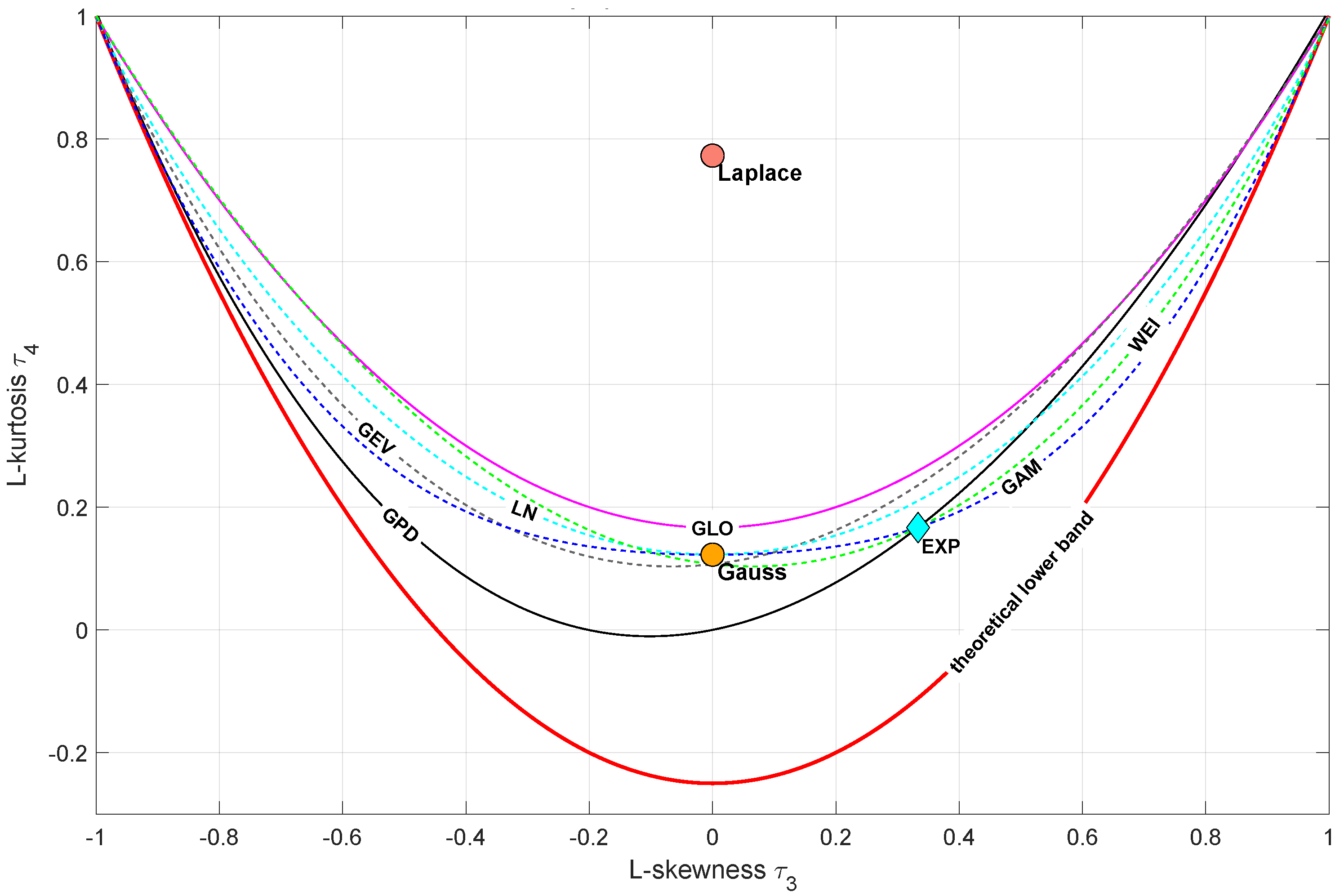
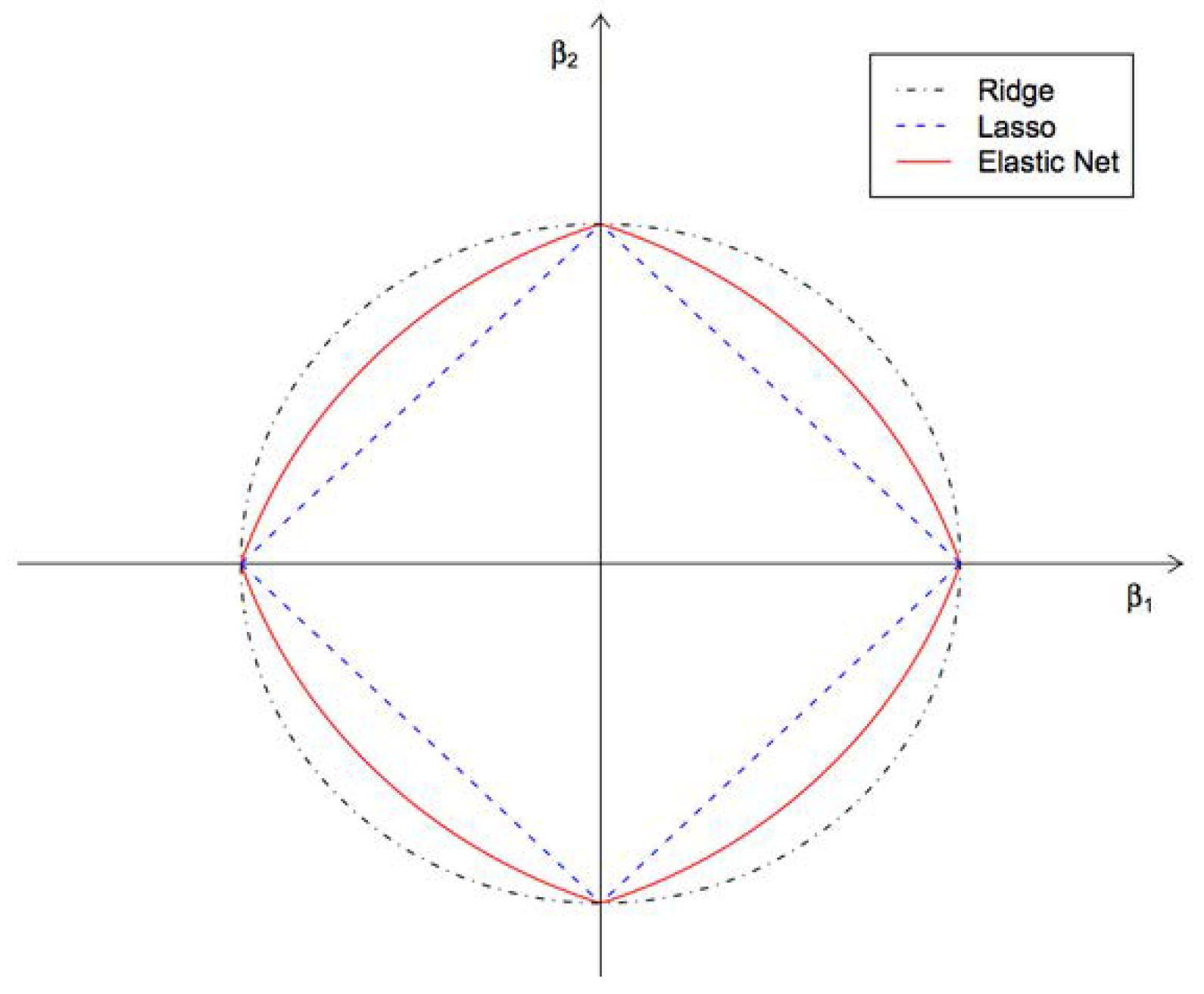

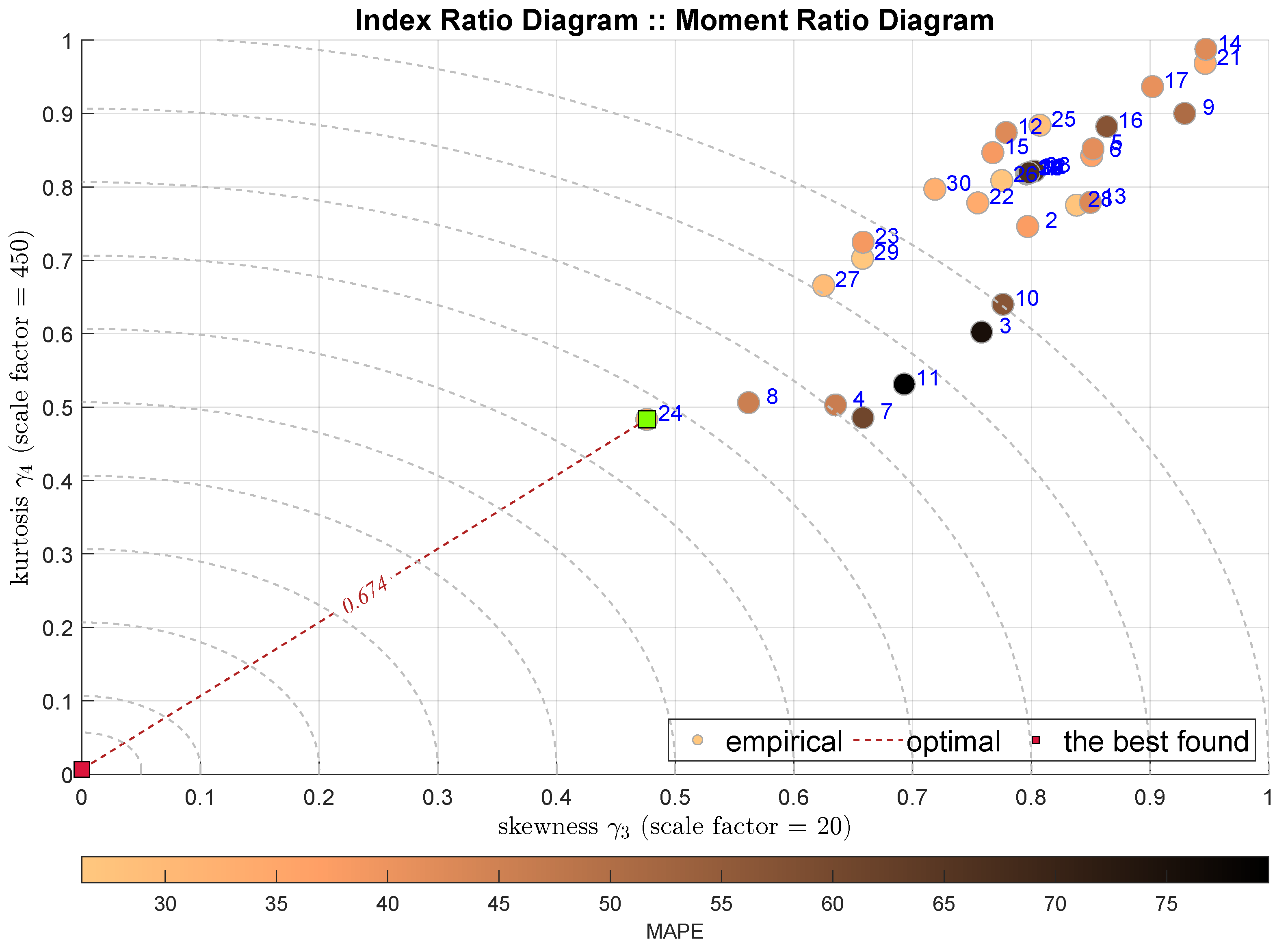

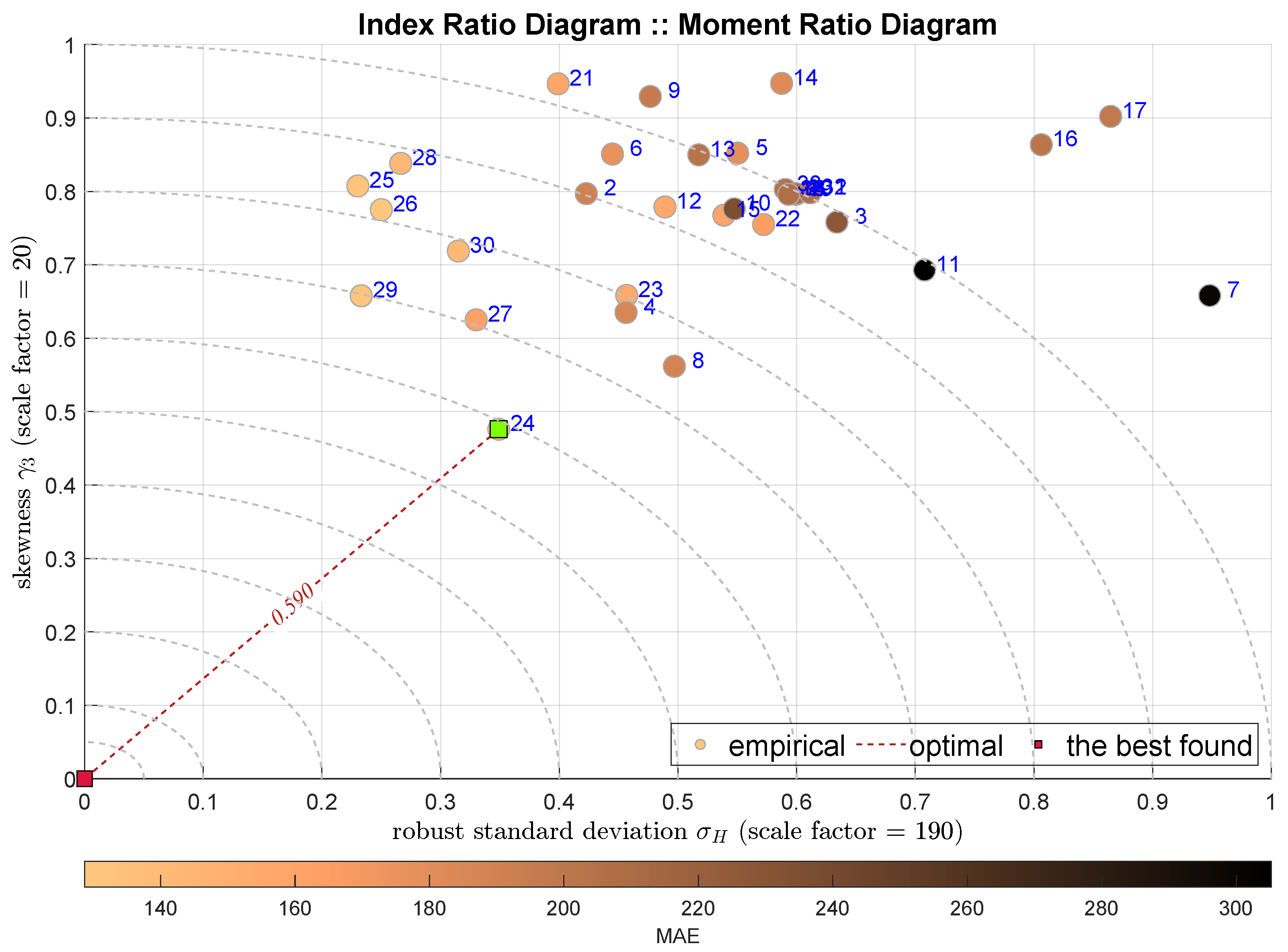
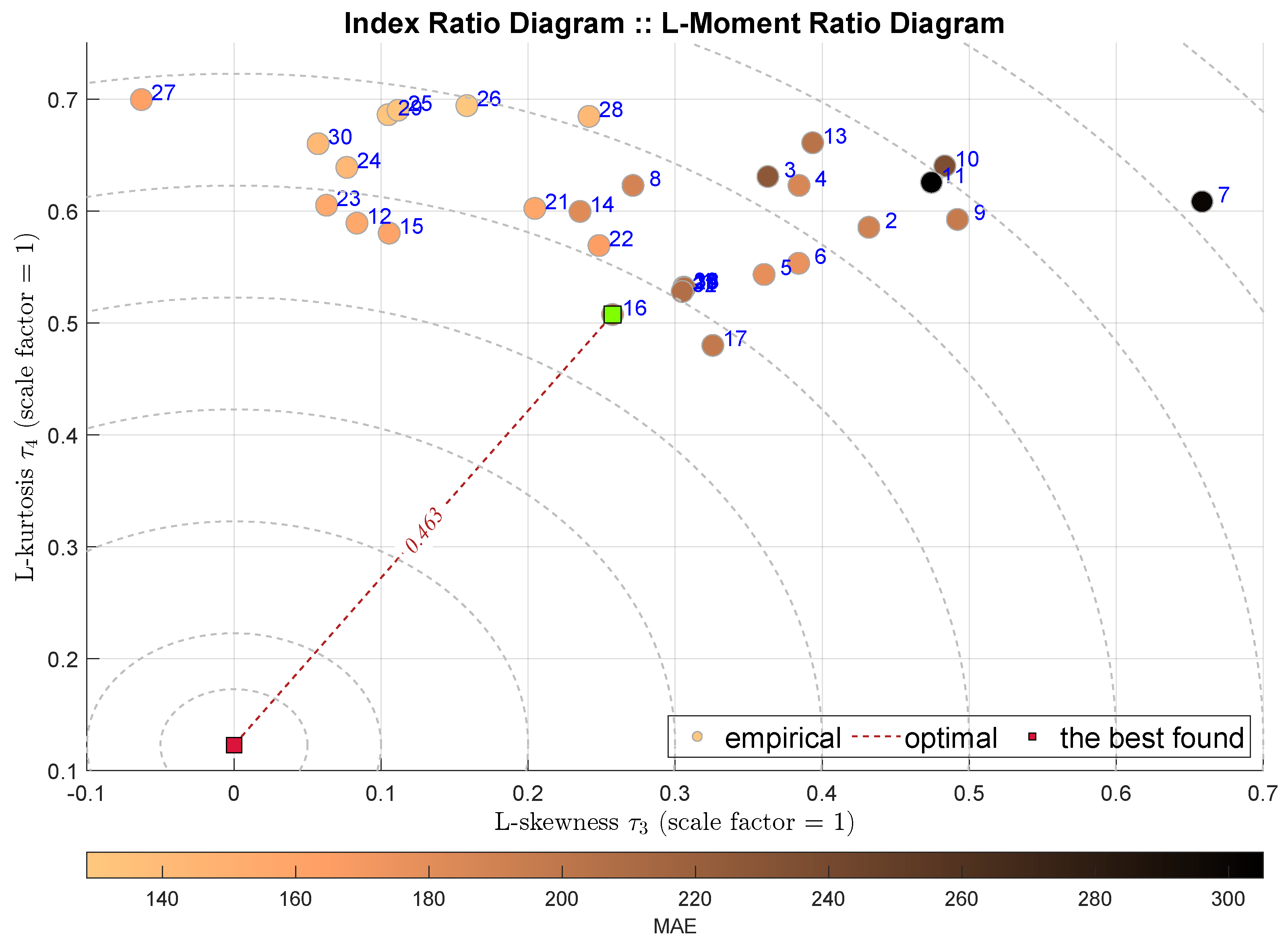
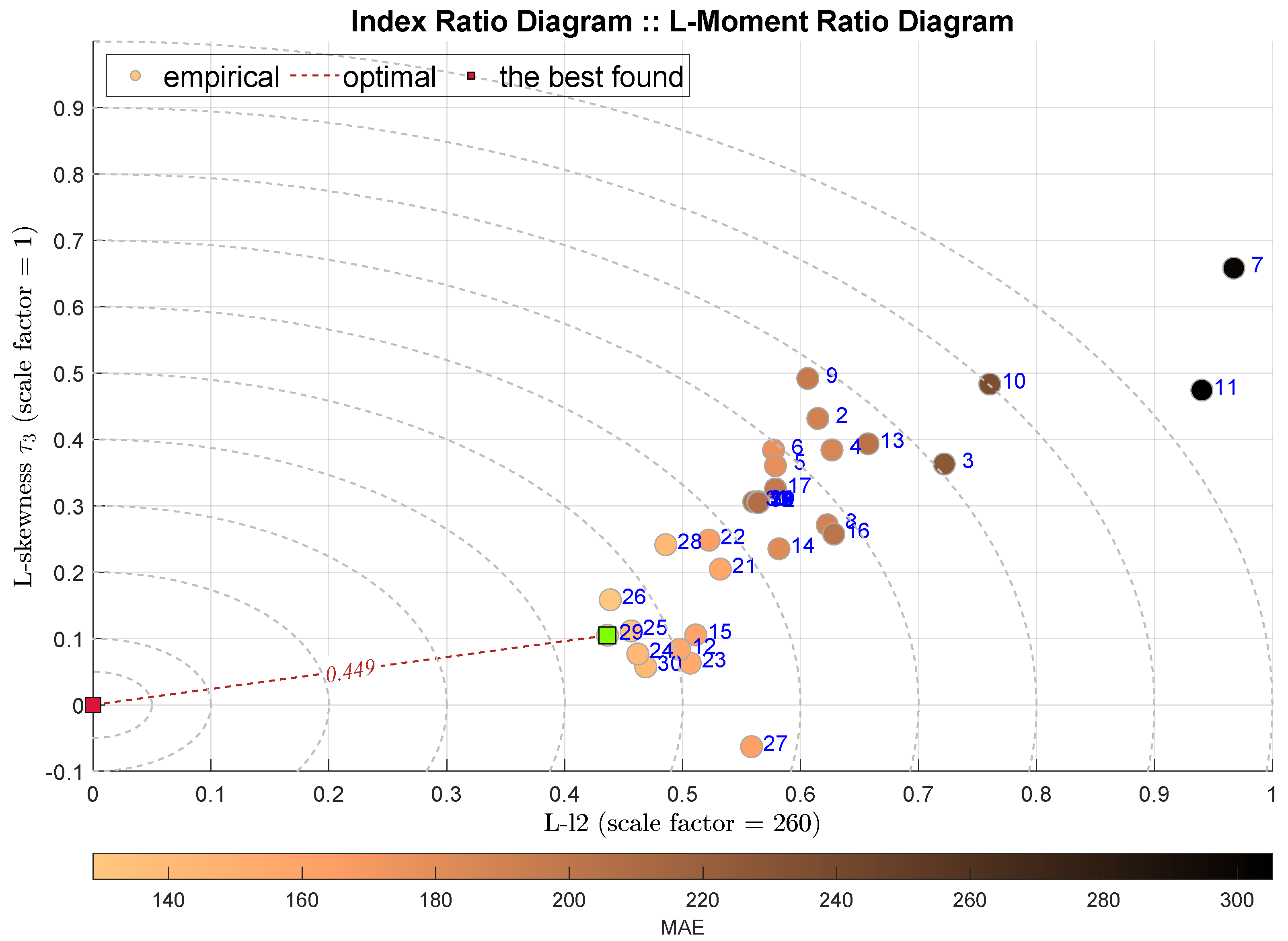
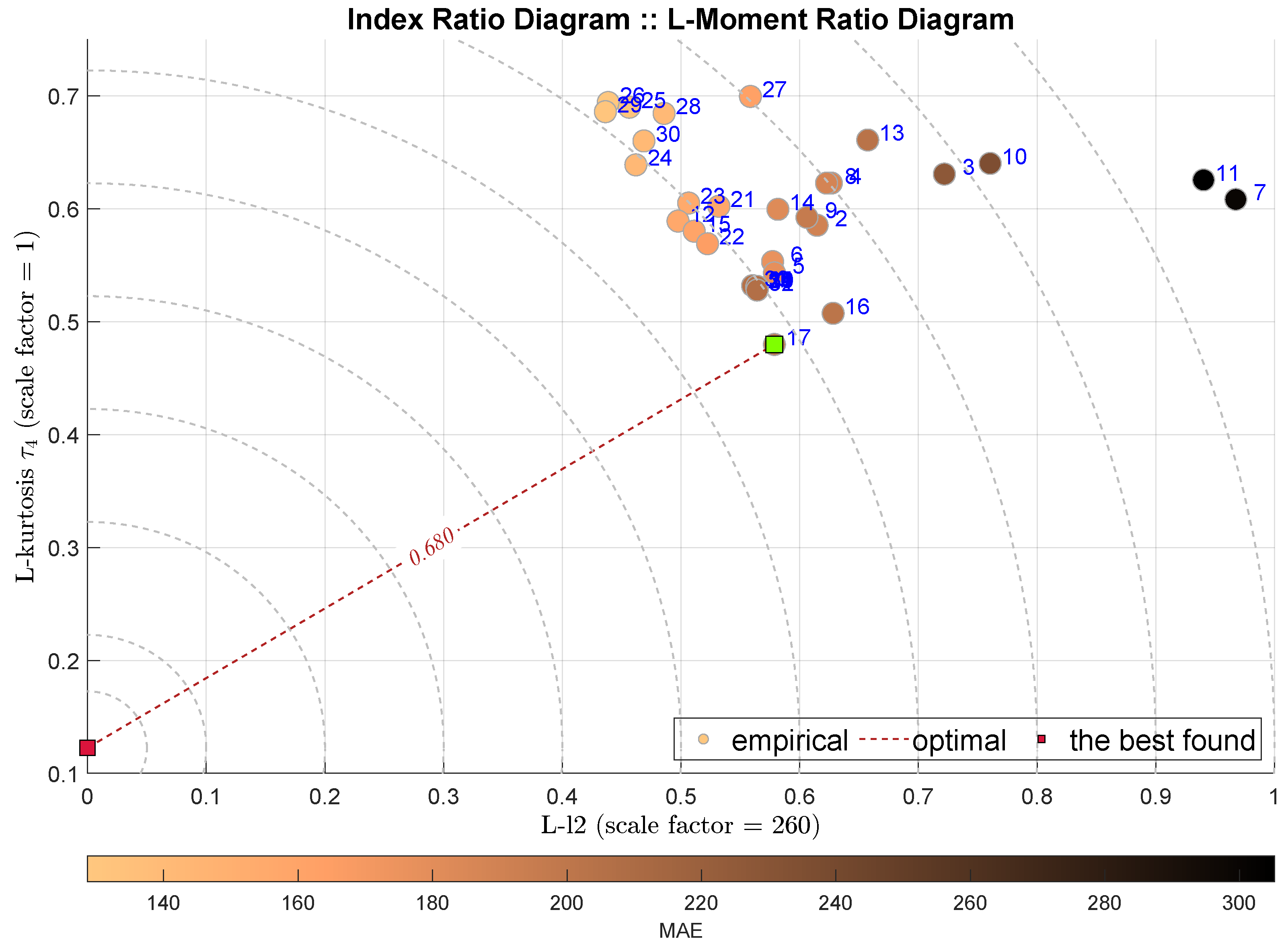
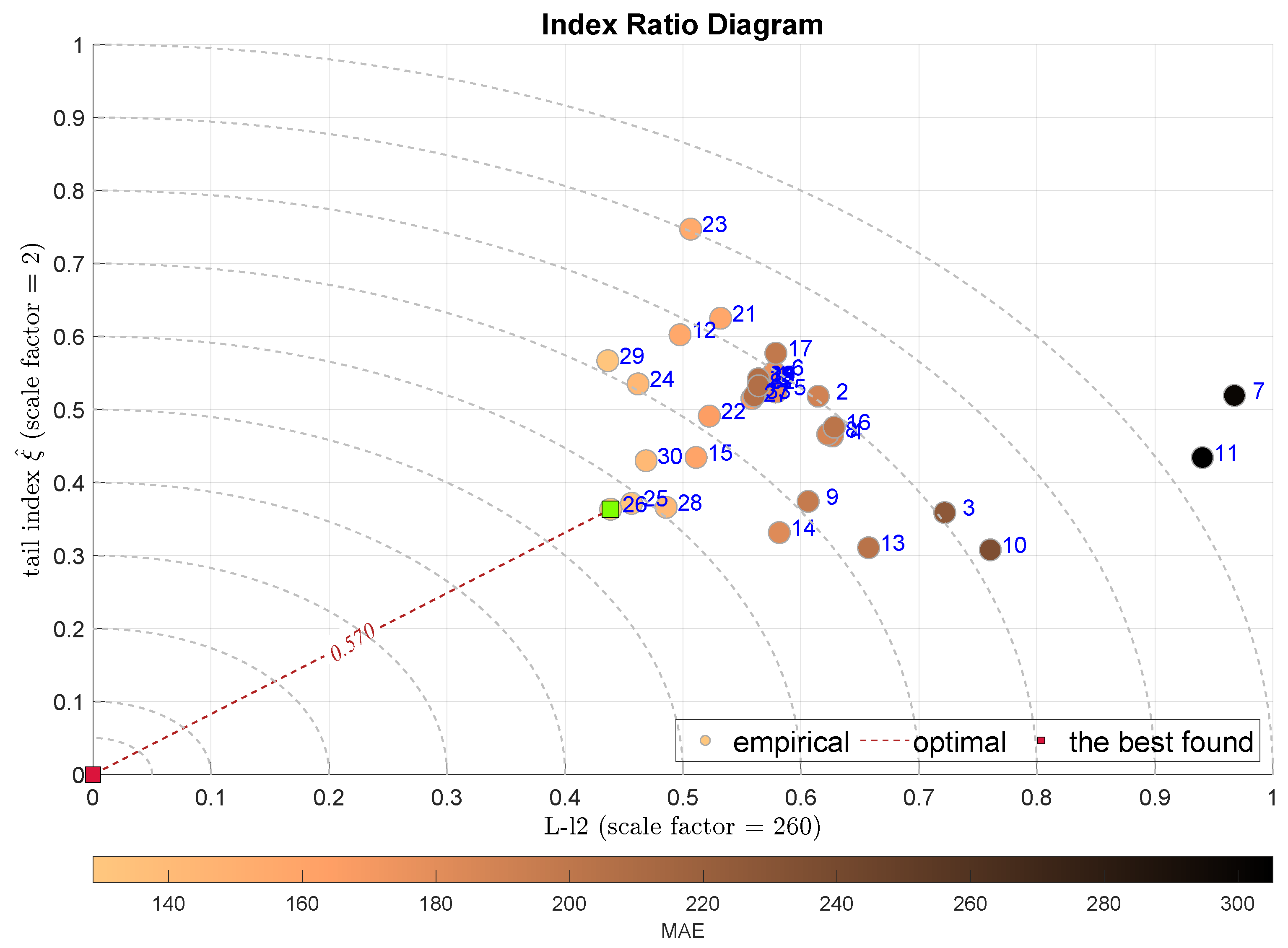
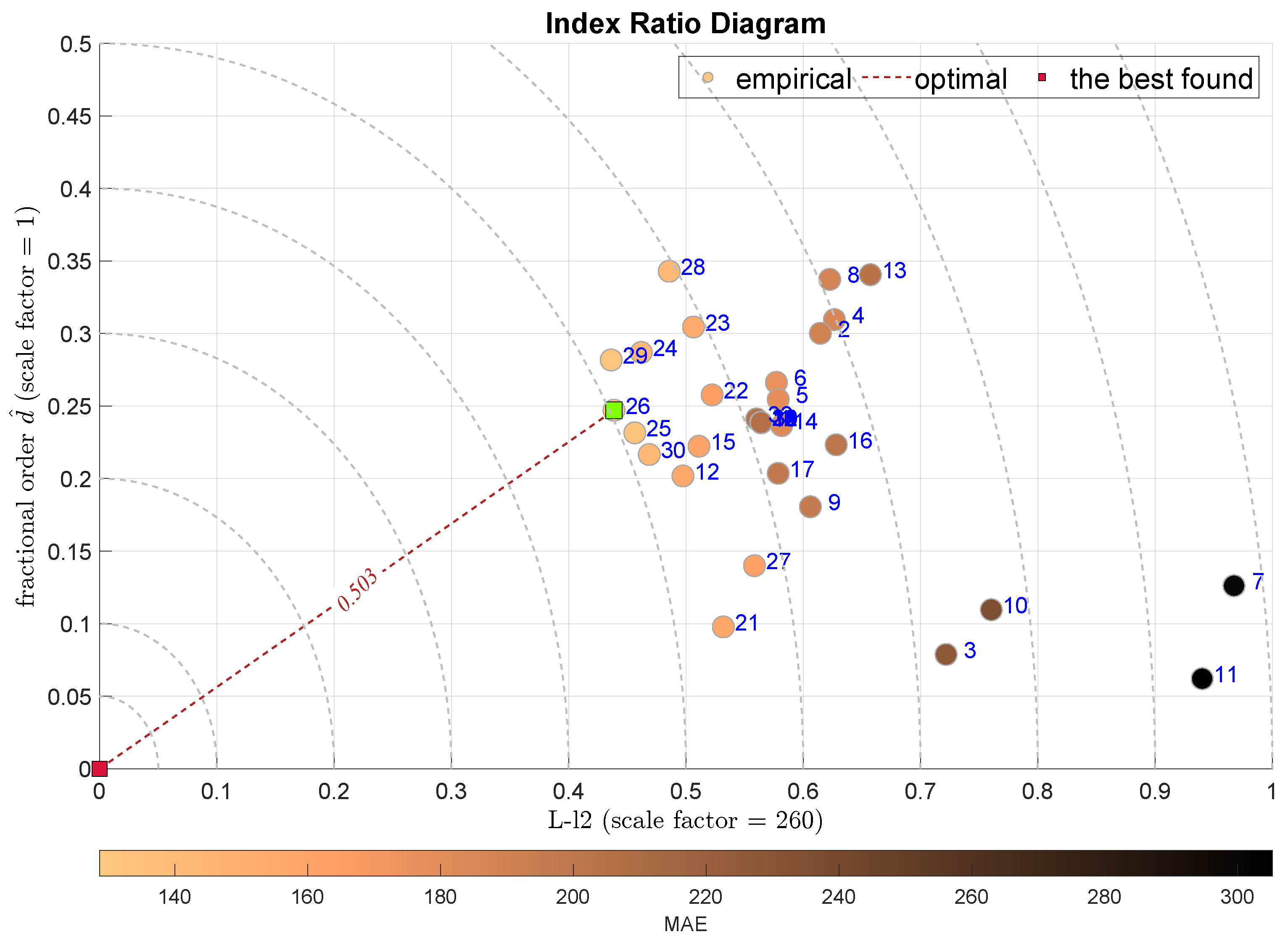
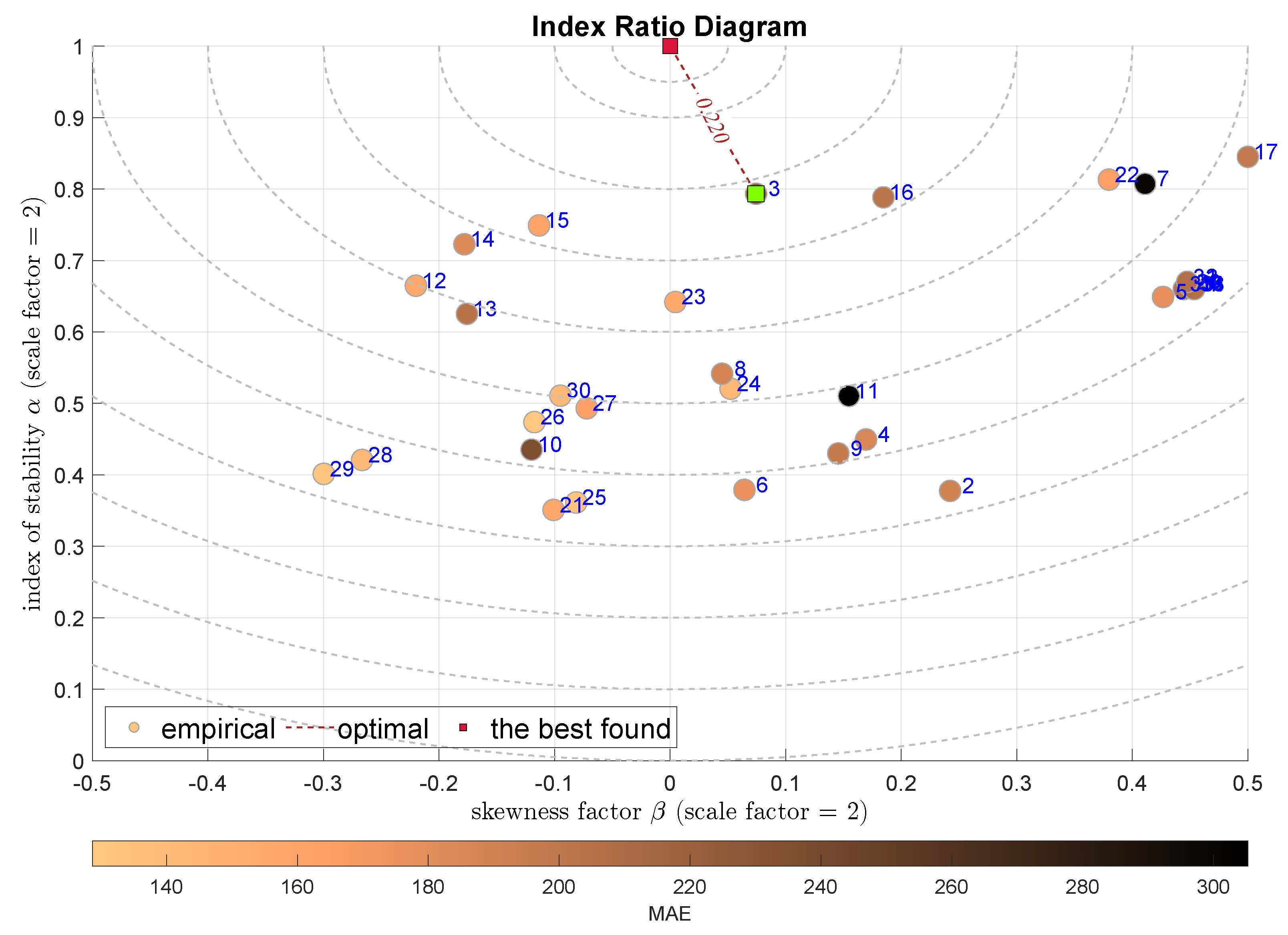
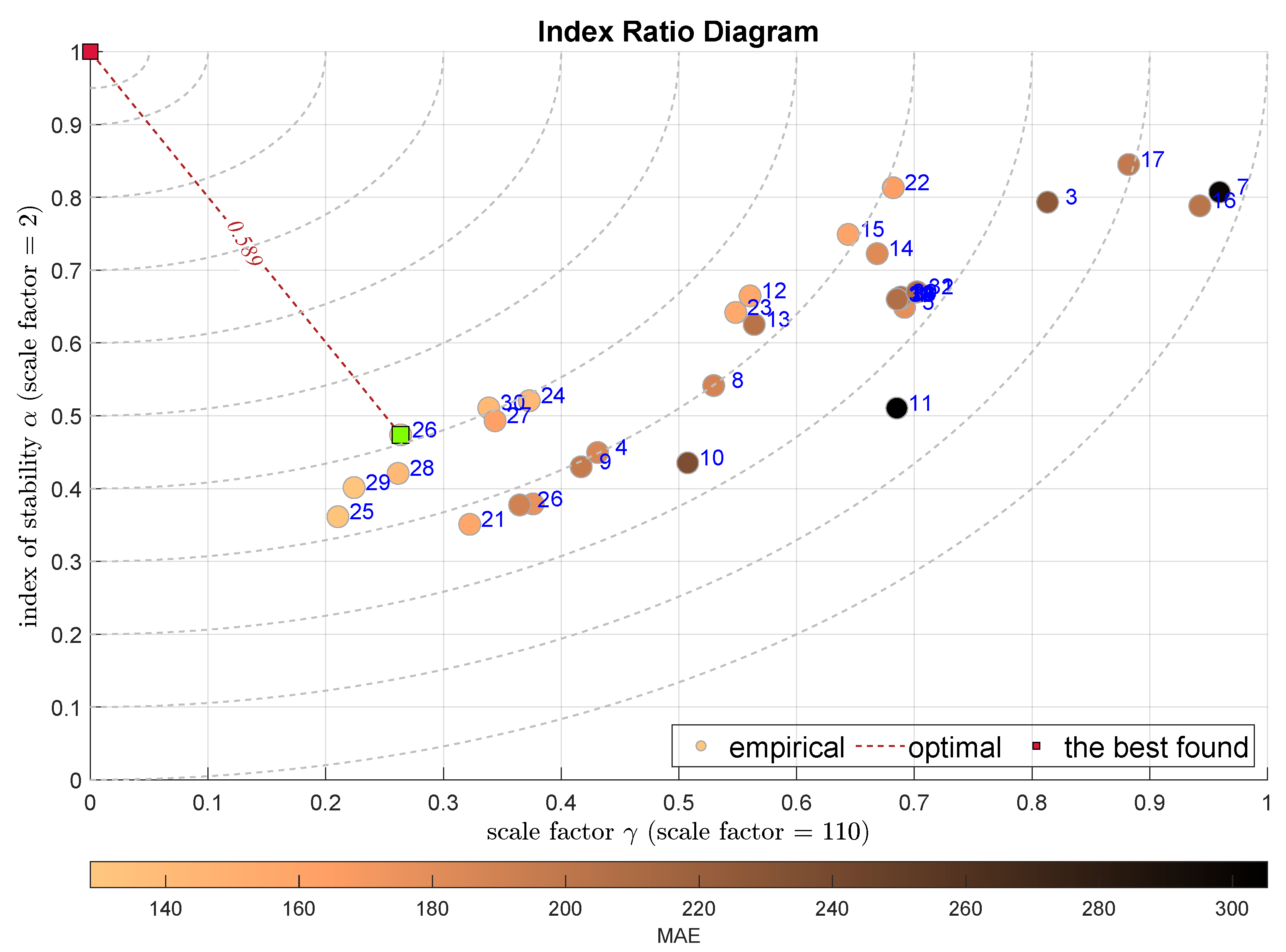
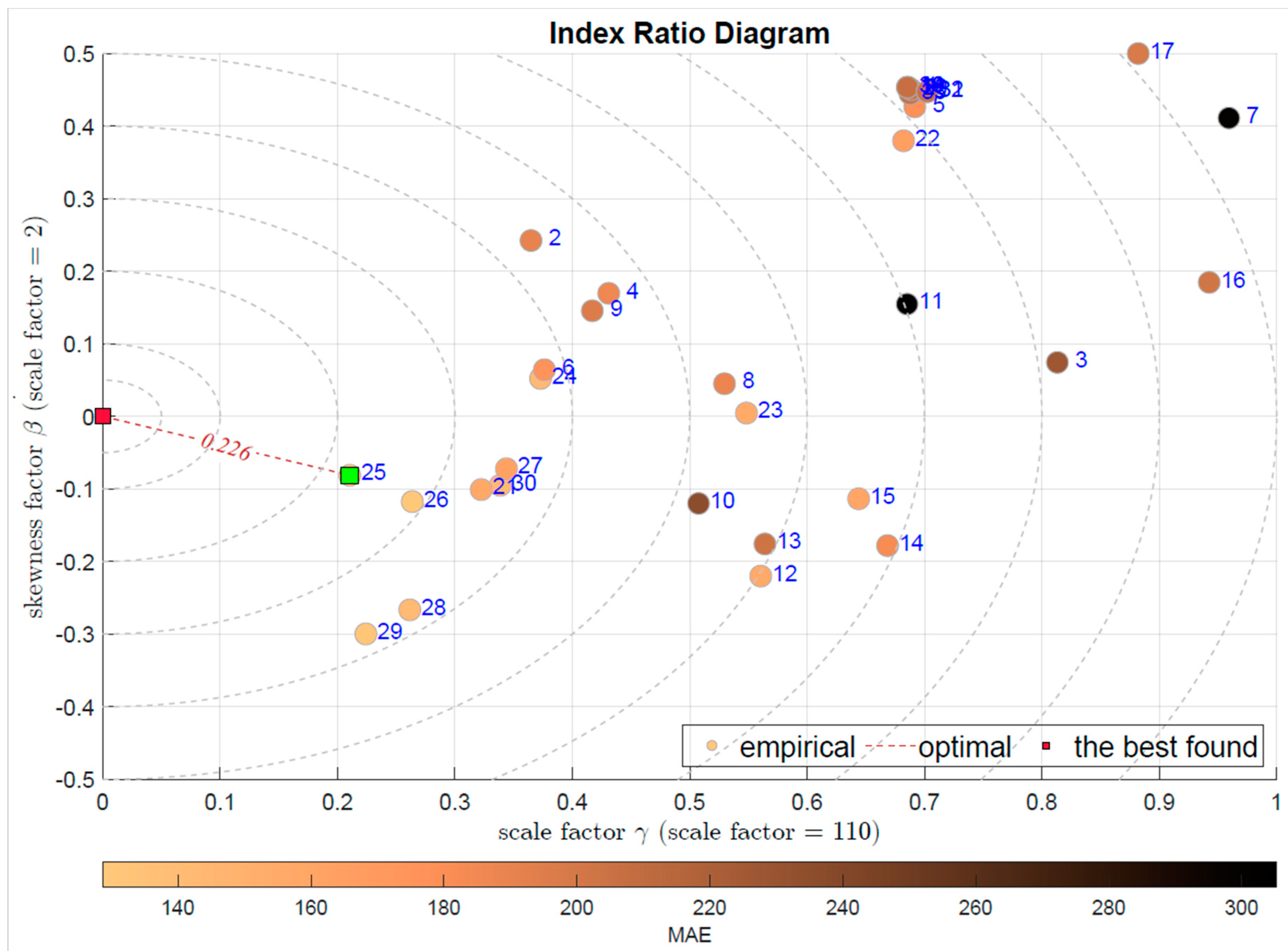
| Data | Raw | Preprocessed |
|---|---|---|
| training | 414,404 | 20,239 |
| validation | 14,968 | 703 |
| Time-Related | Distance-Related | Route-Related | Freight-Related |
|---|---|---|---|
| date of payment | total distance | number of loads | usage of cold storage |
| min transport time | total empty distance | number of unloadings | |
| max transport time | |||
| time interval | |||
| date of transport | |||
| lead time |
| MAPE [%] | Interpretation |
|---|---|
| <10 | highly accurate forecasting |
| 10–20 | good forecasting |
| 20–50 | reasonable forecasting |
| >50 | inaccurate forecasting |
| No | Descriptor | Method Name | MAE | MSE | MAPE [%] |
|---|---|---|---|---|---|
| 1 | LMS | Least Squares | 205.8 | 704,903 | 66.24 |
| 2 | R-LMS | Robust Linear Regression | 189.2 | 837,335 | 37.69 |
| 3 | SLR | Stepwise Linear Regression | 226.8 | 1,664,193 | 75.34 |
| 4 | TS-LR | Theil-Sen Regressor | 188.4 | 851,928 | 46.61 |
| 5 | H-LR | Huber Regressor | 177.6 | 763,898 | 41.4 |
| 6 | LSVM | Linear Support Vector Machines | 175.6 | 764,256 | 36.11 |
| 7 | KSVM | Kernel Support Vector Machines | 298.9 | 1,943,548 | 60.79 |
| 8 | QSVM | Quadratic Support Vector Machine | 187.1 | 877,200 | 45.61 |
| 9 | CGSVM | Coarse Gaussian Support Vector Machines | 195.6 | 1,088,107 | 50.5 |
| 10 | MGSVM | Medium Gaussian Support Vector Machines | 235.0 | 1,479,565 | 56.79 |
| 11 | FGSVM | Fine Gaussian Support Vector Machines | 304.8 | 1,746,572 | 79.59 |
| 12 | EGPR | Exponential Gaussian Process Regression | 155.5 | 748,644 | 42.58 |
| 13 | SEGPR | Squared Exponential Gaussian Process Regression | 202.4 | 1,193,684 | 42.76 |
| 14 | MGPR | Matern 5/2 Gaussian Process Regression | 182.1 | 967,428 | 42.37 |
| 15 | RGPR | Rational Quadratic Gaussian Process Regression | 159.7 | 718,013 | 38.31 |
| 16 | k-NN | k-Nearest Neighbors Regressor | 200.9 | 824,671 | 57.08 |
| 17 | OMP | Orthogonal Matching Pursuit | 198.0 | 858,053 | 40.65 |
| 18 | RR | Ridge Regression | 205.8 | 704,902 | 66.24 |
| 19 | ARD-RR | Automatic Relevance Determination | 205.4 | 704,991 | 65.99 |
| 20 | B-RR | Bayesian Ridge Regression | 205.7 | 704,758 | 66.31 |
| 21 | DTR | Decision Tree Regressor | 167.9 | 614,842 | 35.45 |
| 22 | BoostRT | Boosted Regression Trees | 164.7 | 719,251 | 33.58 |
| 23 | GBoostRT | Gradient Boosting Regression | 151.8 | 695,577 | 38.04 |
| 24 | HGBoostRT | Histogram Gradient Boosting Regression | 140.0 | 490,936 | 34.01 |
| 25 | ERTR | Extremely Randomized Trees | 131.2 | 712,589 | 27.68 |
| 26 | BRTR | Bagged Regression Trees | 128.5 | 626,157 | 26.83 |
| 27 | F-DTR | Fine Regression Tree | 161.6 | 688,117 | 29.23 |
| 28 | M-DTR | Medium Regression Tree | 140.6 | 675,587 | 27.12 |
| 29 | C-DTR | Coarse Regression Tree | 130.5 | 609,023 | 26.25 |
| 30 | RFR | Random Forest Regression | 136.1 | 625,584 | 30.77 |
| 31 | LASSO-R | LASSO Regression | 205.9 | 705,301 | 66.54 |
| 32 | LARS-R | LARS Lasso | 205.9 | 705,301 | 66.54 |
| 33 | ENR | Elastic Net Regression | 204.9 | 702,740 | 66.39 |
| 34 | LAR | Least Angle Regression | 205.8 | 704,903 | 66.24 |
| 35 | ANN | Artificial Neural Network | 134.0 | 651,000 | 27.82 |
| Diagram | Feature | Selected Model | |
|---|---|---|---|
| Number | Name | ||
| IRD(,) | symmetry | 24 | Histogram Gradient Boosting Regression |
| normality | |||
| IRD(,) | symmetry | 24 | Histogram Gradient Boosting Regression |
| fluctuations | |||
| IRD(,) | symmetry | 24 | Histogram Gradient Boosting Regression |
| fluctuations | |||
| IRD(,) | symmetry | 16 | k-Nearest Neighbors Regressor |
| normality | |||
| unbiased by outliers | |||
| IRD(L-,) | symmetry | 29 | Coarse Regression Tree |
| fluctuations | |||
| unbiased by outliers | |||
| IRD(L-,) | normality | 17 | Orthogonal Matching Pursuit |
| fluctuations | |||
| unbiased by outliers | |||
| IRD(L-,) | outliers (tails) | 26 | Bagged Regression Trees |
| fluctuations | |||
| unbiased by outliers | |||
| IRD(L-,) | normality | 26 | Bagged Regression Trees |
| fluctuations | |||
| unbiased by outliers | |||
| IRD(,) | normality | 3 | Stepwise Linear Regression |
| symmetry | |||
| unbiased by outliers | |||
| IRD(,) | normality | 26 | Bagged Regression Trees |
| fluctuations | |||
| unbiased by outliers | |||
| IRD(,) | symmetry | 25 | Extremely Randomized Trees |
| fluctuations | |||
| unbiased by outliers | |||
Disclaimer/Publisher’s Note: The statements, opinions and data contained in all publications are solely those of the individual author(s) and contributor(s) and not of MDPI and/or the editor(s). MDPI and/or the editor(s) disclaim responsibility for any injury to people or property resulting from any ideas, methods, instructions or products referred to in the content. |
© 2024 by the authors. Licensee MDPI, Basel, Switzerland. This article is an open access article distributed under the terms and conditions of the Creative Commons Attribution (CC BY) license (https://creativecommons.org/licenses/by/4.0/).
Share and Cite
Kaniuka, J.; Ostrysz, J.; Groszyk, M.; Bieniek, K.; Cyperski, S.; Domański, P.D. Multicriteria Machine Learning Model Assessment—Residuum Analysis Review. Electronics 2024, 13, 810. https://doi.org/10.3390/electronics13050810
Kaniuka J, Ostrysz J, Groszyk M, Bieniek K, Cyperski S, Domański PD. Multicriteria Machine Learning Model Assessment—Residuum Analysis Review. Electronics. 2024; 13(5):810. https://doi.org/10.3390/electronics13050810
Chicago/Turabian StyleKaniuka, Jan, Jakub Ostrysz, Maciej Groszyk, Krzysztof Bieniek, Szymon Cyperski, and Paweł D. Domański. 2024. "Multicriteria Machine Learning Model Assessment—Residuum Analysis Review" Electronics 13, no. 5: 810. https://doi.org/10.3390/electronics13050810
APA StyleKaniuka, J., Ostrysz, J., Groszyk, M., Bieniek, K., Cyperski, S., & Domański, P. D. (2024). Multicriteria Machine Learning Model Assessment—Residuum Analysis Review. Electronics, 13(5), 810. https://doi.org/10.3390/electronics13050810








